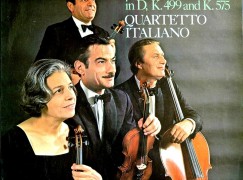Hubert Giraud, whose 1960s French hits were covered by British and American singers, has died at 94. He is probably best known for Sous le ciel de Paris, but there was also Mamy Blue….
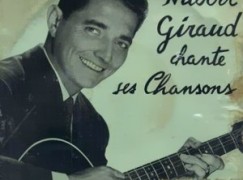
Hubert Giraud, whose 1960s French hits were covered by British and American singers, has died at 94. He is probably best known for Sous le ciel de Paris, but there was also Mamy Blue….

A volunteer orchestra at MIT is putting on the first performances in the Boston area of two symphonies by Philip Glass, based on the albums of David Bowie.
The conductor Evan Ziporyn says: ‘This is a way for the musical community of Boston to channel our grief and express our gratitude to Bowie in a positive way. The generosity of these top-notch musicians has been incredible, putting their time and talent toward this project on extremely short notice. It took less than a day to put an entire orchestra together.’
The concert is on January 29. Tickets at $15 here. Free to MIT students. All proceeds to cancer research.

There’s a thoughtful piece on NewMusicBox by Mari Valverde on how composers and conductors, overwhelmingly male expect too much from sopranos, universally female. Sample:
Soprano and composer Victoria Fraser, a friend of mine who makes a living as a choral musician, recently referenced her experience at a summer music festival in Germany. They prepared one movement from a new major work by James MacMillan, commissioned for the following summer, and she said it “killed” the sopranos. To which I responded, “Well, MacMillan is not a soprano.”

I fondly recall singing the popular Scottish composer’s The Gallant Weaver under Simon Carrington as a member of the Texas All-State Choir. It is a sublime example of a work for advanced adult mixed voices requiring vocal flexibility, endurance, and wide ranges. The alto, tenor, and bass parts remain low and the sopranos are high and exposed. In fact, there are three soprano parts, creating a melody that echoes in heterophony with many sustained highs and repeated leaps to A5.
Yes, it makes beautiful music, but it is what I call an “expensive piece.” It is demanding, to say the least. This model for vocal beauty has been popularized, and, much like society’s standards for feminine beauty, it is lofty, grossly impractical, and often, manufactured.
Mari has a point. Read on here.
Tenor Jonathan Blalock reports that, of 14 opera and concert engagements last year, only three came from auditions.
So how does he cope with disappointment?
It’s incredibly easy to fall into the trap of “compare & despair” when I see colleagues skyrocket into superstardom. Naturally I feel dejected whenever I’m “on the short list” for a role and they end up choosing someone else. But instead of wallowing in self-pity, I try to redirect that negative energy into something productive.
And how does that work?
Read here.

I have written a few times about Charlotte Moorman, a livewire of the 1960s New York avantgarde who, along with her friend Yoko Ono, placed her naked body at the centre of her performing art.
Charlotte received her first biography the year before last, and very good it is, too.
Now she is the subject of a major documentary and an exhibition in Chicago.
If she had kept her clothes on, that might not have been the case, even with Yoko’s occasional advocacy.
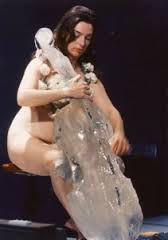
Read a curator interview and exhibition details here.
Sample: Feminist artists sometimes dismissed Charlotte as a narcissist. They thought also she was letting herself be used by male artists. But nothing could be farther from the truth. Charlotte knew what she was doing, she had complete control over the use of her body and she saw her body as a material that could be used for forms of expression whether it was clothed or unclothed. In fact, in one case, she talks about her nudity as “the costume.” Charlotte was fearless about putting this raw material of her body at the disposal of art, but also, deploying it to make art herself. In the way that some artists use canvas and a brush, she used her nudity.
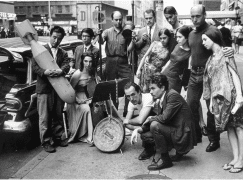
Icons of the avant-garde: Publicity photograph for 3rd Annual New York Avant-Garde Festival, August 26, 1965. Left to right: Nam June Paik, Charlotte Moorman, Takehisa Kosugi, Gary Harris, Dick Higgins, Judith Kuemmerle, Kenneth King, Meredith Monk, Al Kurchin, Phoebe Neville. In front, kneeling, Philip Corner and James Tenney. (Photo, Peter Moore. Photograph © Barbara Moore/Licensed by VAGA, NY)
The building that houses the Lithuanian Music Information and Publishing Centre and the Lithuanian Composers’ Union caught fire on Wednesday.
Along with irreplaceable documents, about 4,500 digitised archival recordings have been lost without backup.
If you can help, please contact Asta Pakarklytė, asta@mic.lt.

After his concert last night with the Harbin Symphony Orchestra, Derek Gleeson was named Principal Guest Conductor. He is one of the first foreigners to hold a title with a Chinese orch.
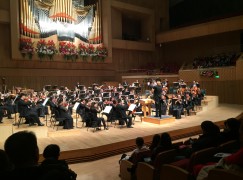
The hall is a modern marvel.
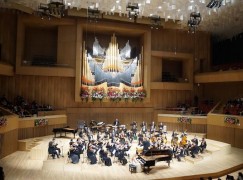
We regret to share news of the death of Elisa Pegreffi, founder member and second violin of the exceptional and vastly renowned Quartetto Italiano. She was 93 years old.
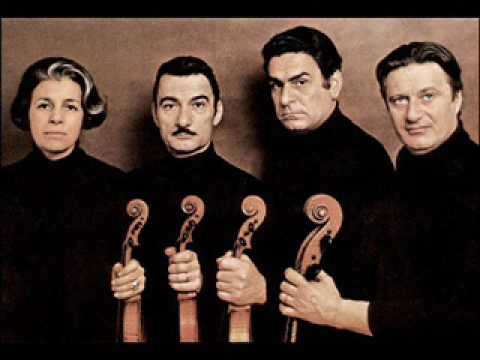
Elisa played chamber music with fellow students during the second world war. In November 1945, they made their debut in Emilia-Romagna as the Nuovo Quartetto Italiano. By the end of the decade, they dropped the ‘nuovo’, replaced the viola and launched on an international and recording career that continued until their disbandment in 1980.
Elisa married first violin Paolo Borciani in 1953.
The group were always innovative. They did a series of lecture tours with Gerda Busoni, the composer’s widow, formed a closed collaboration with Maurizio Pollini and recorded the complete Schubert canon.
But their most significant impact was to transform perceptions of Italian musicianship. In a period when Italy was known for singers and its orchestras were undervalued, the Quartetto Italiano demonstrated the unique and innate qualities of Italian instrumental playing.
Borciani died in 1985, cellist Franco Rossi in 2006 and the violist Piero Farulli in 2012.
Elisa was cared for from 2007 at the Riposo per Musicisti Giuseppe Verdi in Milan. Her son, the pianist Mario Borciani, recalls that she liked to say, ‘I was somebody because there were others.’
Sic transit harmonia mundi.
